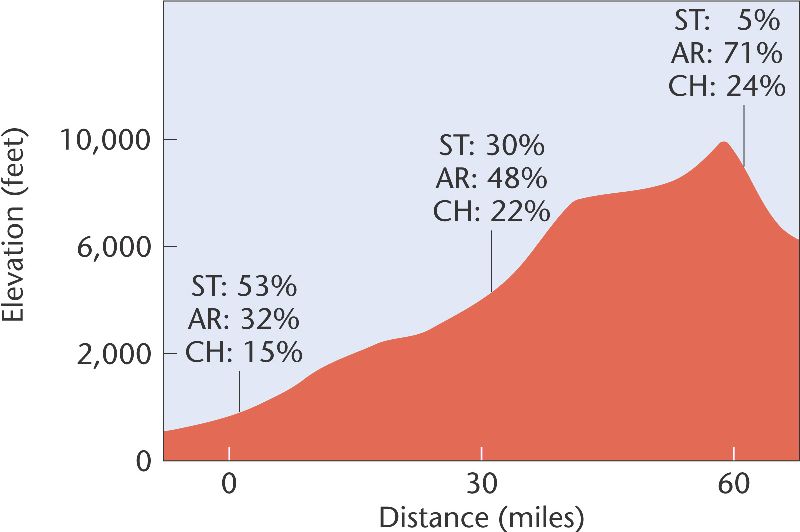
The Genetic Structure of Populations Changes across Space and Time
As population geneticists discovered that most populations harbor considerable genetic diversity, they also found that the genetic structure of populations varies across space and time. To illustrate, we consider studies on Drosophila pseudoobscura conducted by Theodosius Dobzhansky and his colleagues. This species is found over a wide range of environmental habitats, including the western and southwestern United States. Although the flies throughout this range are morphologically similar, Dobzhansky's team discovered that populations from different locations vary in the arrangement of genes on chromosome 3. They found several different inversions in this chromosome that can be detected by loop formations in larval polytene chromosomes. Each inversion sequence is named after the locale in which it was first discovered (e.g., AR = Arrowhead, British Columbia, and CH = Chiricahua Mountains, Arizona). The inversion sequences were compared with one standard sequence, arbitrarily designated ST.
[Page 645]
Figure 26-4 compares the frequencies of three arrangements at different elevations in the Sierra Nevada Mountains in California. The ST arrangement is most common at low elevations; at 8000 feet, AR is the most common and ST least common. In the populations studied, the frequency of the CH arrangement gradually increases with elevation, a phenomenon that is probably the result of natural selection and that parallels the gradual environmental changes occurring at ascending elevations, such as decreasing air temperature.
Figure 26-4. Inversions in chromosome 3 of D. pseudo-obscura at different elevations in the Sierra Nevada range near Yosemite National Park.
